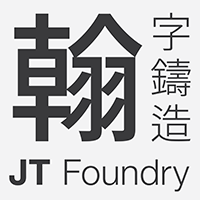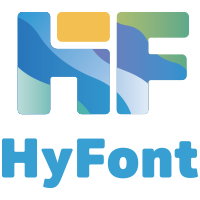Code-free web design with Webydo and Adobe Muse
The art of web design demands a creative mind capable of visualizing the many aspects that go into creating eye-popping websites. While beautiful designs and original layouts are the most recognizable parts of our favorite websites, the work done by talented designers has always required an equally talented developer to put together the often complicated, underlying code. Thanks to new software from Adobe and Webdyo however, the need for coding skills has been eliminated allowing the developer complete control over their projects. Though Webydo and Adobe Muse may appear very similar on the surface, each piece of software manages to distinguish itself in subtle ways during the process of web design.
A different take on web design software
Both Webydo and Adobe Muse were founded on the premise that web designers needed a comprehensive tool for publishing their designs without writing a single line of code. With that in mind, Webydo set out with a focus on streamlining and organizing the act of creating websites. Utilizing a clean, dynamic interface, Webydo's web-based software guides the designer through the logical steps of web creation without ever overwhelming the designer with too many options. Adobe Muse takes a similar approach, but gathers much of its inspiration from its siblings in the Creative Cloud suite. As such, Muse takes pride in putting as many features as possible at the fingertips of the designer. This gives the user fine-tuned control of the software, but at the cost of user-friendliness.
Webydo's two pronged approach
Separating the web design process into two main phases, Design and Content, Webydo starts users off with the task of laying out their design with basic web elements. The traditional design canvas, complete with rulers and grid lines awaits the draggable elements such as text areas, form fields, design shapes, and widgets to be placed and configured. Webydo does a fantastic job with its toolbar layouts by making use of overlapping menus that hide options not currently being used. These context sensitive menus allow designers to focus on single web elements while still providing ample configuration options from dimensions to color palettes. Pages are divided into tabs resting on top of the canvas with global elements such as headers and footers being editable from all pages. Webydo's approach to the design view gives users a simple and intuitive interface without sacrificing capability.
Once all design elements have been meticulously placed in their final resting spots, designers can move on to the Content phase to fill the empty design with meaningful content. Where the Design phase was all about the aesthetics and feel of the website, the Content view deals with the more practical aspects of a web page. This way of creating physical and mental separation between these two facets of web design actually works quite well in practice. Web elements put in place in the previous phase are free to be filled in without worry of making accidental design changes thanks to their "frozen" state.
Once content inhabits the bare structure, designers will then likely want to view their creation through the eyes of the client which can be quickly and easily accomplished in the neighboring Preview tab.
Adobe's familiar philosophy
Where Webydo takes the "less is more" approach to web design software, Adobe Muse sticks with the same philosophy as its other Creative Cloud tools by giving the designer as many options as possible within the confines of the Muse application window. Broken down into Plan, Design, Preview, and Publish phases, Muse starts designers off in the overarching Plan stage that focuses on big picture design choices. Things like page order, navigation, and site mapping can be taken care of here.
With the basic flow of the site in place, the Design view comes next which in most respects mirrors Webydo's offering. The same large canvas with rulers, grid lines, and toolbars makes an appearance. Muse's greatest strength lies in the Design view's familiar Adobe packaging. Users with enough experience in the Adobe Design culture will no doubt finesse their way through the abundant tools and menus without a second thought. This great strength however can also be a large detractor to folks without much time in the Adobe ecosystem. For these designers, Webydo's intuitive and intelligent toolbars will likely make a world of difference by greatly reducing the time it takes to get up to speed on proficient interface navigation. It's worth noting here that despite their differences, both Webydo and Adobe Muse are professional pieces of web design software capable of creating the same top notch websites.
After the design of the site is complete, Muse offers the same previewing capabilities of its Webydo counterpart. Should the designer be satisfied with their design as seen through the Preview tab, publishing to a third-party host or Adobe's proprietary service is as simple as visiting the Publish view and entering the pertinent information.
Above and beyond
From planning to designing to publishing, both Webydo and Muse provide fantastic tools for web designers looking to cut out the coding requirement. Each tool is completely capable of creating the same professional web sites that today's web design clients expect. With the main differences being the way in which designers are exposed to the tools of the trade, what makes Webydo a compelling choice to the masses of Adobe faithful?
Well, for those willing to give the free web-based design tool a try, it's the post-publishing features that truly set Webydo apart. On the Adobe Muse side of the fence, once the site has been published to the designer's host of choice, users must rely on other tools for actually managing clients and their websites. Webydo on the other hand lets designers take care of these managerial tasks from the very same software they used to create the designs. With a friendly dashboard interface, designers can let clients preview projects, assign CMS privileges, and even manage billing. All sites created with Webydo are hosted directly on Webydo's servers backed by the cutting edge Akamai content delivery network. With these features in tow, designers can manage all aspects of professional web design from the same cloud platform without the need to install a single piece of software.
Taking all this into account, Webydo, with its free price tag (premium accounts are available for users needing more storage and custom domains), clean interface, and impressive array of post-publishing features paints a clear picture of what modern, code-free web design software should look like.
-
 ShanhaiFonts
ShanhaiFonts
Brand:山海字库
Area:China

-
 Cangji Fonts
Cangji Fonts
Brand: 仓迹字库
Area: China

-
 JT Foundry
JT Foundry
Brand: 翰字铸造
Area: Taiwan, China

-
 Handmadefont
Handmadefont
Brand:
Area: Estonia

-
·千图字体
-
 HyFont Studio
HyFont Studio
Brand: 新美字库
Area: China

- ·Sinnesreize / Embracing Sensation by Silvia Gertsch and Xerxes Ach
- ·Quimbaya Coffee Roasters
- ·"Die Alpen – Vielfalt in Europa" stamp
- ·London Underground's iconic Johnston Sans typeface
- ·Königsblut identity
- ·Amazon Releases Ember Bold Font for the Kindle
- ·Benetton identity redesign
- ·20 Houses. A New Residential Landscape exhibition, Wallpaper* Architects Directory
- ·47 free tattoo fonts for your body art
- ·The Future of Sex poster























